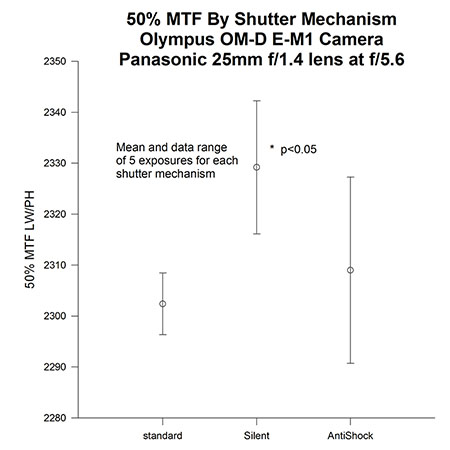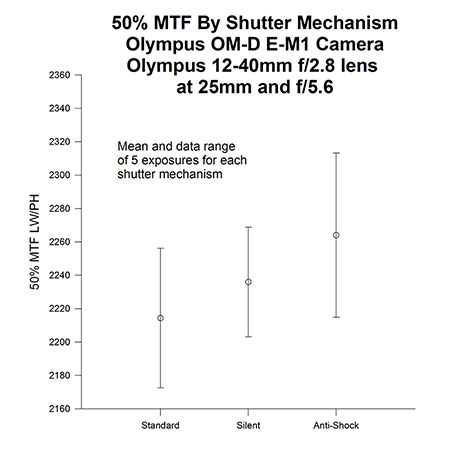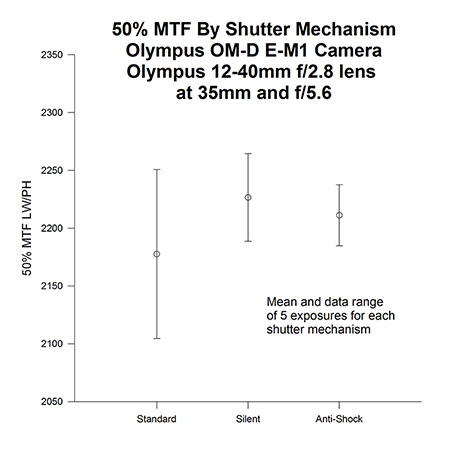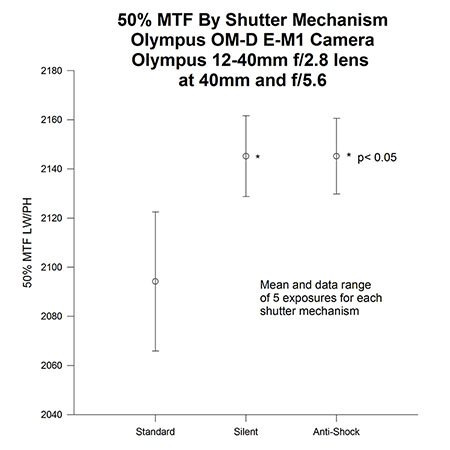During the lens test on the Olympus M.Zuiko ED 12-40mm f/2.8 Pro with the OM-D E-M1, a question about the effects of shutter shock arose. The MTF50 values in the original test had been run with the camera on a tripod using the standard shutter with the image stabilizer off and with a 2 second shutter delay. In the tests summarized below, the same conditions were used with the standard mechanical shutter and no image stabilization while the camera was on the tripod with delayed shutter activation. MTF50 was determined for five (n=5) exposure. The test was repeated using the silent shutter mode and repeated again with the anti-shock mode. Values were analyzed for mean and scatter and compared by ANOVA (analysis of variance) and Student Newman Keuls test to determine whether differences were statistically significant.
There was significant improvement in MTF50 values when either silent mode or anti-shock mode were used in some instances. The improvement over the standard shutter mode was between 1 and 2% in the MTF50 value.



